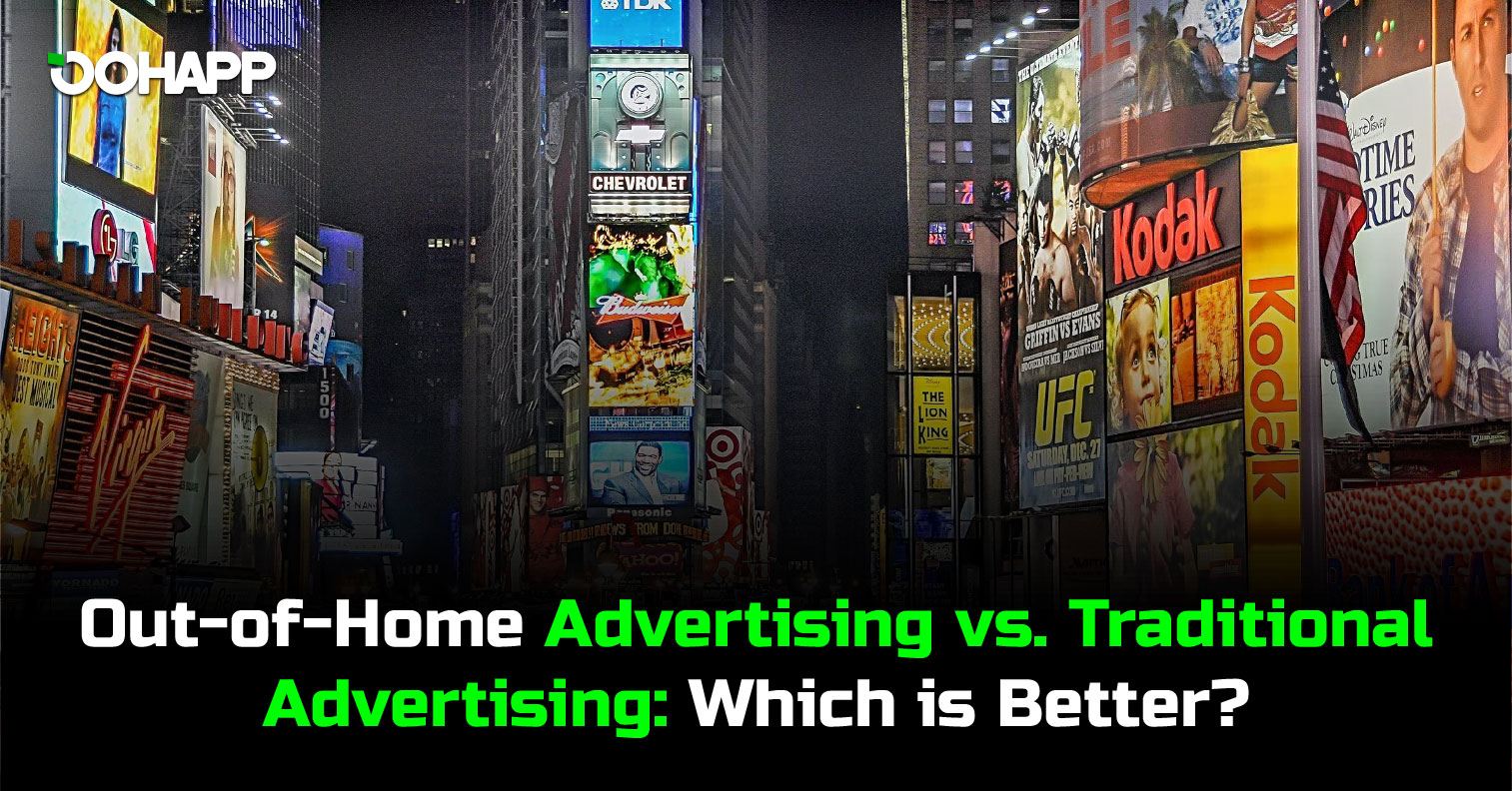Introduction
Are you planning to advertise your brand or product through out-of-home (OOH) advertising but are unsure about the regulations and guidelines for it? Look no further, as we've got you covered! OOH advertising has been around for decades, and with the growing digital age, it has become more innovative than ever. However, certain rules and regulations are in place to ensure that advertisers comply with ethical standards while promoting their products or services. In this blog post, we'll look at federal regulations, state and local laws as well as general guidelines for OOH advertising. Read on to know everything there is to know about OOH Advertising Services!
1. What is Out-of-Home Advertising?
Out-of-Home Advertising (OOH) is a type of marketing that targets audiences outside their homes. It encompasses all forms of advertising that consumers encounter while they are on the go, such as billboards, street furniture, transit advertising, and digital displays. OOH ads can be found in public spaces like shopping malls, airports, train stations, bus stops and other high-traffic areas.
One advantage of OOH advertising is its ability to reach a large audience effectively. Unlike other forms of advertising which might be ignored or skipped over by viewers online or via TV commercials, OOH advertisements are difficult to miss since people cannot simply turn them off or block them out.
The effectiveness of an OOH campaign depends largely on the choice of location for the advertisement - it needs to attract attention from its target demographic to generate results.
Overall, OOG Advertising Services have become increasingly popular among businesses due to its wide reach and ability to create brand awareness effectively.
2. Federal Regulations
Federal Regulations for Out-of-Home Advertising are set by the Federal Highway Administration (FHWA) and the Department of Transportation (DOT). The regulations aim to ensure that outdoor advertising does not distract drivers or obstruct their view.
One of the key federal regulations is the Highway Beautification Act, which limits billboards along interstate highways. Under this act, states must keep a certain distance between each billboard and limit their size and lighting.
Additionally, all outdoor advertising must comply with the FHWA's Manual on Uniform Traffic Control Devices (MUTCD), which sets guidelines for sign placement, visibility, and legibility.
The FHWA also requires advertisers to obtain permits before installing any permanent signs along highways or interstates. These permits help regulate where signs can be placed and how they should be maintained.
All out-of-home advertising must follow specific rules regarding content such as avoiding false claims or statements that could mislead consumers.
These Federal Regulations play an important role in ensuring safe driving conditions while still allowing businesses to advertise effectively through OOH Advertising Services offered by companies like ours.
3. State and Local Regulations
State and local regulations play a crucial role in shaping out-of-home advertising practices. While federal laws provide broad guidelines, specific rules can vary depending on the state or city where the ad is displayed.
In some areas, billboards must be set back from roads by a certain distance to ensure safety for drivers and pedestrians. Other regions may require permits to install outdoor advertisements, with strict zoning ordinances dictating where they can be placed.
Some states also have restrictions on what types of content can be included in an OOH advertisement. For instance, ads featuring tobacco products may be prohibited under anti-smoking laws, while campaigns promoting alcohol might only be allowed in designated locations away from schools and places of worship.
Advertisers need to research local regulations before planning their campaigns to avoid costly fines or having their advertisements taken down. Working with an experienced OOH advertising company that understands these nuances can help ensure compliance while still achieving campaign goals.
4. Guidelines for OOH Advertising
When it comes to out-of-home (OOH) advertising, there are certain guidelines that advertisers need to follow. These guidelines vary from state to state and even city to city, so it's essential for companies offering OOH advertising services or looking to advertise through OOH channels to familiarize themselves with the relevant regulations.
One of the most important guidelines for OOH advertising is ensuring that ads are not offensive or misleading. This includes avoiding any content that could be considered discriminatory, promoting illegal activities, or making false claims about products or services.
Another guideline is placement restrictions. For example, in some areas, billboards may not be placed too close to schools or residential neighbourhoods. There may also be restrictions on the size and number of signs allowed in a particular area.
Additionally, many cities require permits for OOH advertising installations. Companies should research local permit requirements before installing their advertisements.
It's important for companies providing OOH advertising services to use high-quality materials and ensure proper installation methods are used for safety purposes.
By following these guidelines and staying up-to-date with regulatory changes in their targeted markets, businesses can effectively utilize OOH advertising while avoiding any potential legal issues.
Conclusion
Out-of-home advertising is a powerful tool for reaching consumers in their daily lives. However, it's important to be aware of the regulations and guidelines that govern these types of ads. From federal laws to local ordinances, there are many rules to follow when creating an OOH campaign.
By working with an experienced OOH advertising company that understands these regulations and guidelines, you can ensure your ads comply with all relevant laws while still delivering effective messaging that resonates with your target audience.
So if you're considering launching an OOH advertising campaign for your business or brand, be sure to do your due diligence and work closely with a knowledgeable partner who can help guide you through the process from start to finish. With the right strategy in place, OOH advertising services can deliver significant results for your bottom line.


